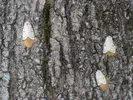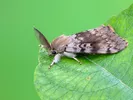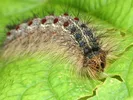How to Check for Spongy Moths Before You Move
Keep invasive insects from hitching a ride during your move
Do bugs creep you out, or do you hold them in high regard (as long as they stay away)? Whether you love or hate them, insects can be trouble if they hide in your belongings — especially outdoor items — when moving out of state.
Some species, like the spongy moth and the spotted lanternfly, are invasive and quarantined in certain states.
Spongy moths (formerly known as gypsy moths) can wreak havoc on hardwood and evergreen trees. Keep reading to learn more about these pests and how to keep them in their place.
Where did the spongy moth come from?
In the late 1860s, the spongy moth was introduced to the United States from Europe during the developing silk industry. While working on cultivating heartier silk-spinning caterpillars, an amateur entomologist, E. L. Trouvelot, had spongy moth specimens escape into his backyard.
A decade later, the insects began appearing in large swarms, causing severe damage to the area's trees. Now, much of the northeastern U.S. has spongy moths.
Spongy moth quarantine areas
As of March 2025, the United States Department of Agriculture has identified the spongy moth in 20 states and Washington, D.C.
The USDA has quarantined the affected areas to contain the insects and prevent their spread. Some states are infested throughout, while others only have activity in selected counties.
The following states are under spongy moth quarantine:
- Connecticut
- Delaware
- Illinois (portions of the state)
- Indiana (portions of the state)
- Maine
- Maryland
- Massachusetts
- Michigan
- Minnesota (portions of the state)
- New Hampshire
- New Jersey
- New York
- North Carolina (portions of the state)
- Ohio (portions of the state)
- Pennsylvania
- Rhode Island
- Vermont
- Virginia (portions of the state and the adjacent District of Columbia)
- West Virginia (portions of the state)
- Wisconsin (portions of the state)
Use the USDA’s map to see if your location is currently affected.
Filling out the insect inspection form
An insect inspection is required when moving from quarantine areas or through places actively trying to prevent the bugs from invading (Alaska, Canada, Hawaii, Oregon and Washington). If you’re using U-Pack® and it applies to your move, we’ll send you a link to the Insect Inspection Form.
You can also access the document online through the U-Pack customer dashboard. It’s easy to fill out; just select each outdoor item you’re moving from the list as you inspect and clean it. Please review the Do Not Ship List and set aside anything that can’t be transported in the moving equipment. If you don’t have any outdoor items, click “Next” and leave everything blank.
When you complete the form, submit it online — ideally at least five business days before your move date. U-Pack will file the document on your behalf.
Note: If you’re moving on short notice, speak with your U-Pack consultant about the timeline for completing the inspection.
Identifying and removing moths and eggs
If you’re moving from a quarantined area, you must thoroughly inspect all outdoor items for signs of spongy moths before loading them into the moving truck or container). This includes camping supplies, empty flowerpots, lawn equipment, patio furniture, sports equipment, tools, toys, etc. You’ll also want to check any boxes stored outdoors or in outbuildings while packing for the move.
Have potted plants? Learn how to properly ship houseplants.
What do spongy moths look like?
While inspecting your things, look for adult moths, caterpillars and egg masses. Check out the photos below for help identifying the bugs.

The female moths are white with black or brown V-shaped markings, and the egg masses are brown and appear spongelike.

The males are mottled brown and gray with feathery antennae.

The caterpillars have large dark eye spots with sets of blue dots right behind their head, followed by six pairs of raised red dots along their back.
What to do if you find bugs on your stuff
If you find any insects or eggs, you must remove and destroy them. To remove egg masses, scrape them off with a putty knife or steel brush. Next, place the eggs in a hot, soapy water container or seal them in a plastic bag and freeze them for several days before disposal.
Need help?
If you have questions about completing the Insect Inspection Form or need assistance with your move, let us know in the comments or call 844-362-5303844-594-3077.
For additional questions about plant pests, visit the USDA website.
Suggested reading: Tips for moving during cicada season.
More articles you might like...



